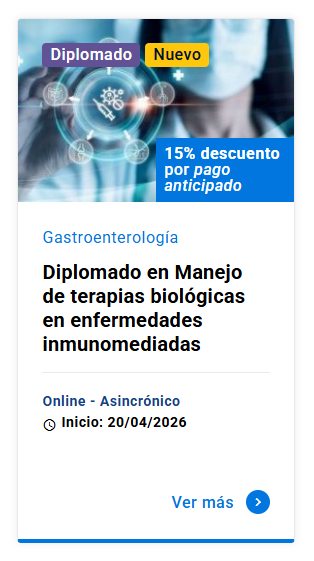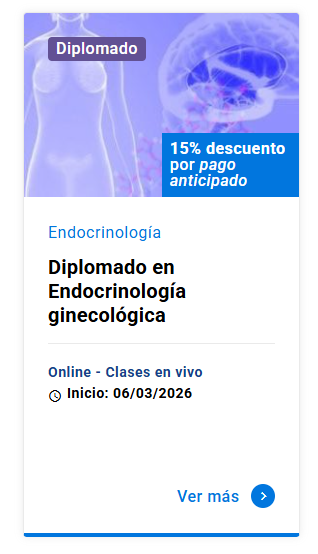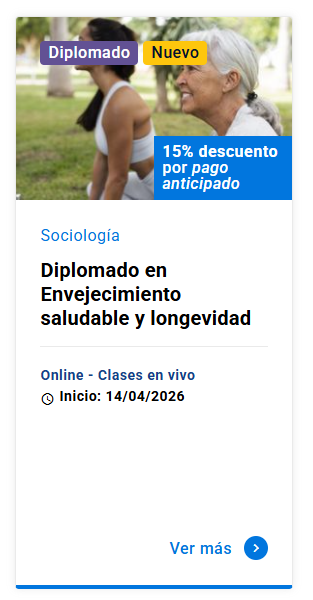Simulación de eventos críticos en anestesia: lecciones y aprendizaje desde la aviación para mejorar la seguridad del paciente
DOI:
https://doi.org/10.11565/arsmed.v43i1.1103Palabras clave:
seguridad en pacientes., ventos críticosResumen
Durante décadas, las industrias de alto riesgo tales como la aviación comercial, las plantas nucleares y la ingeniería militar han sido entrenadas en el manejo de eventos críticos. En salud, la aplicación de los conceptos del entrenamiento del equipo de aviación y Crew Resource Management ("manejo de los recursos en crisis"), particularmente en anestesia, se han utilizado para mejorar la seguridad del paciente. Los eventos críticos, definidos como el punto en el curso de una enfermedad en la que se produce un cambio decisivo que conduce a la recuperación o a la muerte, tienen muchas características ideales para el entrenamiento por simulación.
En esta revisión narrativa, nuestro objetivo es definir los conceptos y la relación entre eventos críticos y simulación en anestesia, determinando su uso en el manejo de dichos eventos y la evidencia existente para apoyarlo.
Descargas
Citas
Referencias
Arnstein F. (1997). Catalogue of human error. Br J Anaesth 79, 645-656. DOI: https://doi.org/10.1093/bja/79.5.645
Billings CE & Reynard WD. (1984). Human factors in aircraft incidents: results of a 7-year study. Aviat Space Environ Med 55, 960-965.
Blum RH, Raemer DB, Carroll JS, Sunder N, Felstein DM & Cooper JB. (2004). Crisis resource management training for an anaesthesia faculty: a new approach to continuing education. Med Educ 38, 45-55. DOI: https://doi.org/10.1111/j.1365-2923.2004.01696.x
Boet S, Bould MD, Fung L, Qosa H, Perrier L, Tavares W, Reeves S & Tricco AC. (2014). Transfer of learning and patient outcome in simulated crisis resource management: a systematic review. Can J Anaesth 61, 571-582. DOI: https://doi.org/10.1007/s12630-014-0143-8
Boet S, Pigford AA, Fitzsimmons A, Reeves S, Triby E & Bould MD. (2016). Interprofessional team debriefings with or without an instructor after a simulated crisis scenario: An exploratory case study. J Interprof Care 30, 717-725. DOI: https://doi.org/10.1080/13561820.2016.1181616
Catchpole K, Bell MD & Johnson S. (2008). Safety in anaesthesia: a study of 12,606 reported incidents from the UK National Reporting and Learning System. Anaesthesia 63, 340-346. DOI: https://doi.org/10.1111/j.1365-2044.2007.05427.x
Cooper JB & Taqueti VR. (2004). A brief history of the development of mannequin simulators for clinical education and training. Qual Saf Health Care 13 Suppl 1, i11-18. DOI: https://doi.org/10.1136/qhc.13.suppl_1.i11
David M. Gaba SKH, Kevin J. Fish, Brian E. Smith, Yasser A. Sowb. (2001). Simulation-Based Training in Anesthesia Crisis Resource Management (ACRM): A Decade of Experience. Simulation & Gaming 32, 175-193. DOI: https://doi.org/10.1177/104687810103200206
Fernandez Castelao E, Boos M, Ringer C, Eich C & Russo SG. (2015). Effect of CRM team leader training on team performance and leadership behavior in simulated cardiac arrest scenarios: a prospective, randomized, controlled study. BMC Med Educ 15, 116. DOI: https://doi.org/10.1186/s12909-015-0389-z
Flin R & Patey R. (2011). Non-technical skills for anaesthesists: developing and applying ANTS. Best Pract Res Clin Anaesthesiol 25, 215-227. DOI: https://doi.org/10.1016/j.bpa.2011.02.005
Fuentes C CM, Altermatt F, Delfino A. (2017). Incorporación de la simulación en el entrenamiento del manejo de recursos en crisis, experiencia del programa de anestesiología de la Pontificia Universidad Católica de Chile. ARS MEDICA Revista de Ciencias Médicas 42, 27-33. DOI: https://doi.org/10.11565/arsmed.v42i1.393
Fung L, Boet S, Bould MD, Qosa H, Perrier L, Tricco A, Tavares W & Reeves S. (2015). Impact of crisis resource management simulation-based training for interprofessional and interdisciplinary teams: A systematic review. Journal of interprofessional care 29, 433-444. DOI: https://doi.org/10.3109/13561820.2015.1017555
Gaba DM. (2000). Anaesthesiology as a model for patient safety in health care. BMJ 320, 785-788. DOI: https://doi.org/10.1136/bmj.320.7237.785
Gaba DM. (2007). The future vision of simulation in healthcare. Simul Healthc 2, 126-135. DOI: https://doi.org/10.1097/01.SIH.0000258411.38212.32
Gaba DM. (2010). Crisis resource management and teamwork training in anaesthesia. Br J Anaesth 105, 3-6. DOI: https://doi.org/10.1093/bja/aeq124
Gaba DM & DeAnda A. (1988). A comprehensive anesthesia simulation environment: re-creating the operating room for research and training. Anesthesiology 69, 387-394. DOI: https://doi.org/10.1097/00000542-198809000-00017
Gaba DM & DeAnda A. (1989). The response of anesthesia trainees to simulated critical incidents. Anesth Analg 68, 444-451. DOI: https://doi.org/10.1213/00000539-198904000-00004
Gaba DM, Maxwell M & DeAnda A. (1987). Anesthetic mishaps: breaking the chain of accident evolution. Anesthesiology 66, 670-676. DOI: https://doi.org/10.1097/00000542-198705000-00013
Georgeff MP & Lansky AL. (1986). A system for reasoning in dynamic domains : fault diagnosis on the space shuttle. SRI International, Menlo Park, Calif.
Grogan EL, Stiles RA, France DJ, Speroff T, Morris JA, Jr., Nixon B, Gaffney FA, Seddon R & Pinson CW. (2004). The impact of aviation-based teamwork training on the attitudes of health-care professionals. J Am Coll Surg 199, 843-848. DOI: https://doi.org/10.1016/j.jamcollsurg.2004.08.021
Hays RTJ, John W. Prince, Carolyn Salas, Eduardo. (1992). Flight simulator training effectiveness: A meta-analysis. Military Psychology 4, 63-74. DOI: https://doi.org/10.1207/s15327876mp0402_1
Holzman RS, Cooper JB, Gaba DM, Philip JH, Small SD & Feinstein D. (1995). Anesthesia crisis resource management: real-life simulation training in operating room crises. J Clin Anesth 7, 675-687. DOI: https://doi.org/10.1016/0952-8180(95)00146-8
Jirativanont T, Raksamani K, Aroonpruksakul N, Apidechakul P & Suraseranivongse S. (2017). Validity evidence of non-technical skills assessment instruments in simulated anaesthesia crisis management. Anaesth Intensive Care 45, 469-475. DOI: https://doi.org/10.1177/0310057X1704500410
Leape LL, Berwick DM & Bates DW. (2002). What practices will most improve safety? Evidence-based medicine meets patient safety. JAMA 288, 501-507. DOI: https://doi.org/10.1001/jama.288.4.501
Mahajan RP. (2010). Critical incident reporting and learning. Br J Anaesth 105, 69-75. DOI: https://doi.org/10.1093/bja/aeq133
Maran NJ & Glavin RJ. (2003). Low- to high-fidelity simulation - a continuum of medical education? Med Educ 37 Suppl 1, 22-28. DOI: https://doi.org/10.1046/j.1365-2923.37.s1.9.x
McFadden RD. (2009). Pilot is jailed after Jetliner's icy plunge. The New York Times, Jan 15. http://www.nytimes.com/2009/01/16/nyregion/16crash.html?pagewanted=all&_r=0. [Revisado el 29 Mayo 2018].
O'Connor P, Campbell J, Newon J, Melton J, Salas E & Wilson KA. (2008). Crew Resource Management Training Effectiveness: A Meta-Analysis and Some Critical Needs. The International Journal of Aviation Psychology 18, 353-368. DOI: https://doi.org/10.1080/10508410802347044
Parsons JR, Crichlow A, Ponnuru S, Shewokis PA, Goswami V & Griswold S. (2018). Filling the Gap: Simulation-based Crisis Resource Management Training for Emergency Medicine Residents. The western journal of emergency medicine 19, 205-210. DOI: https://doi.org/10.5811/westjem.2017.10.35284
Reason J. (2000). Human error: models and management. West J Med 172, 393-396. DOI: https://doi.org/10.1136/ewjm.172.6.393
Reason J. (2004). Beyond the organisational accident: the need for "error wisdom" on the frontline. Qual Saf Health Care 13 Suppl 2, ii28-33. DOI: https://doi.org/10.1136/qhc.13.suppl_2.ii28
Runciman WB & Merry AF. (2005). Crises in clinical care: an approach to management. Qual Saf Health Care 14, 156-163. DOI: https://doi.org/10.1136/qshc.2004.012856
Safar P, Brown TC, Holtey WJ & Wilder RJ. (1961). Ventilation and circulation with closed-chest cardiac massage in man. JAMA 176, 574-576. DOI: https://doi.org/10.1001/jama.1961.03040200010003
Seropian MA. (2003). General concepts in full scale simulation: getting started. Anesth Analg 97, 1695-1705. DOI: https://doi.org/10.1213/01.ANE.0000090152.91261.D9
Shapiro MJ, Morey JC, Small SD, Langford V, Kaylor CJ, Jagminas L, Suner S, Salisbury ML, Simon R & Jay GD. (2004). Simulation based teamwork training for emergency department staff: does it improve clinical team performance when added to an existing didactic teamwork curriculum? Qual Saf Health Care 13, 417-421. DOI: https://doi.org/10.1136/qshc.2003.005447
Toff NJ. (2010). Human factors in anaesthesia: lessons from aviation. Br J Anaesth 105, 21-25. DOI: https://doi.org/10.1093/bja/aeq127
Wayne DB, Didwania A, Feinglass J, Fudala MJ, Barsuk JH & McGaghie WC. (2008). Simulation-based education improves quality of care during cardiac arrest team responses at an academic teaching hospital: a case-control study. Chest 133, 56-61. DOI: https://doi.org/10.1378/chest.07-0131
Weller J, Morris R, Watterson L, Garden A, Flanagan B, Robinson B, Thompson W & Jones R. (2006). Effective management of anaesthetic crises: development and evaluation of a college-accredited simulation-based course for anaesthesia education in Australia and New Zealand. Simul Healthc 1, 209-214. DOI: https://doi.org/10.1097/01.SIH.0000245656.68315.3c
Wong AK. (2004). Full scale computer simulators in anesthesia training and evaluation. Can J Anaesth 51, 455-464. DOI: https://doi.org/10.1007/BF03018308
Ziv A, Ben-David S & Ziv M. (2005). Simulation based medical education: an opportunity to learn from errors. Med Teach 27, 193-199. DOI: https://doi.org/10.1080/01421590500126718
Descargas
Publicado
Cómo citar
Licencia
Derechos de autor 2018 ARS MEDICA Revista de Ciencias Médicas

Esta obra está bajo una licencia internacional Creative Commons Atribución-CompartirIgual 4.0.
Los autores/as conservan sus derechos de autor y garantizan a la revista el derecho de primera publicación de su obra, la que estará simultáneamente sujeta a la Licencia CC BY-SA 4.0 (Ver declaración de Acceso Abierto).







